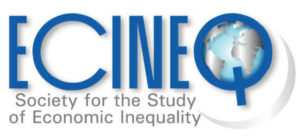Within-group inequality: a comparison of different definitions and a new proposal of decomposition
Working Paper 2024-673
Abstract
In this paper, we compare two alternative procedures for identifying the within-group component of total inequality while decomposing total inequality into a between and a within-group term: the standard additive decomposition, which defines within-group inequality as the weighted sum of the inequality in each group, and the path-independent decomposition, which redefines the concept of within-group inequality by looking at a standardized distribution where groups have the same average income and do not overlap.We show that a decomposition of total inequality based on the former approach offers a clean measure of the between-group inequality, which is insensitive to changes in the distribution that do not alter the relative difference between the groups’ averages. On the other hand, a decomposition based on the latter approach offers an unbiased measure of the within-group inequality, which is independent of the between-group component. Hence, we propose a new decomposition of the Gini index that combines the definition of between-group inequality stemming from the additive decomposition with the measure of within-group inequality at the base of the path-independent decomposition.Finally, we turn to the decomposition of the partial Lorenz ordering by exploring the implications of Lorenz between-group dominance combined with Lorenz within-group dominance. We also show the difficulty of defining sufficient conditions for two Lorenz curves not to intersect and suggest an alternative partial order based on concentration curves which do not account for the overlap between groups.
Authors: Marc Fleurbaey, Peter Lambert, Domenico Moramarco, VIto Peragine.
